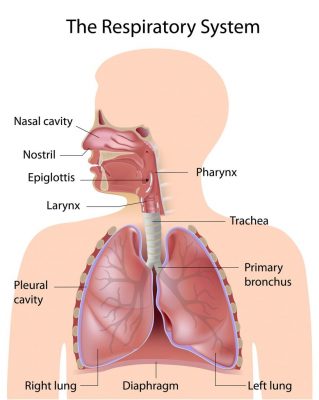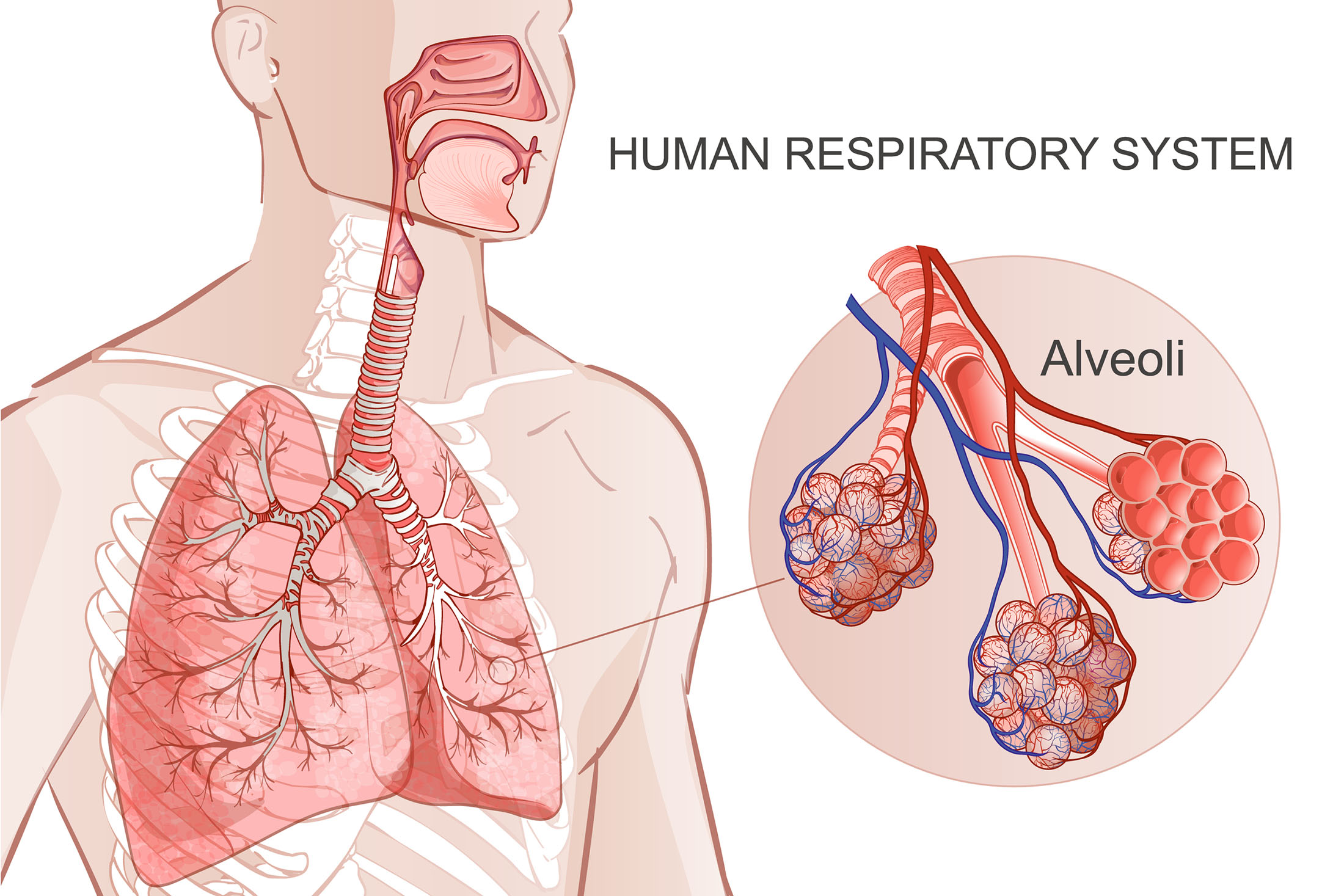
Respiratory Organs

Respiratory Organ Objectives
-
Describe the organs gases pass through when you breath in and out, including the pharynx, larynx, trachea, and lungs.
-
Outline the basic structures of the lungs, including the bronchi, bronchioles, and alveoli.
-
Explain how the structure of an alveolus relates to its function.

The primary respiratory system function is relatively straight forward: move oxygen-rich air into the body and remove carbon dioxide.
This is a look at the path of air through the repiratory organs.
This model provides a more detailed view of the respiratory organs, including the larynx.
Organs are comprised of tissues. This video shows the basic tissue layers of the trachea, or “windpipe.”
The trachea branches into primary and secondary bronchi, sometimes called the “bronchial tree.”
The lungs consist of the bronchi, bronchioles, alveoli, and many blood vessels.

Most of the respiratory organs are tubes moving gases into and out of the alveoli. What do the alveoli do that is so important?
Each alveolus has a little fluid surfactant lining it, which improves gas diffusion. If you are in a desert or dry sauna, you may find it harder to breath. Loss of surfactant through evaporation as we breath out reduces the rate of gas exchange with the capillaries.

The lungs have a spongy appearance under the microscope because of the millions of alveoli.
Check your knowledge:
The lining layer on the inside of the trachea is a special type of columnar _____ tissue. It has _____-producing cells that make a sticky fluid that can trap dirt and potential pathogens. Other cells have hair-like _____ that can move the mucus up the trachea to be swallowed down the esophagus and destroyed by stomach acids and enzymes.
The trachea branches into two primary _____, tubes. The primary and secondary bronchi branch into even smaller tubes called the _____. The bronchioles dead-end into _____, ballon-like sacs that exchange gases with small blood capillaries (vessels).
The next section explores various respiratory disorders.

Check your knowledge. Can you:
-
describe the organs gases pass through when you breath in and out, including the pharynx, larynx, trachea, and lungs?
-
outline the basic structures of the lungs, including the bronchi, bronchioles, and alveoli?
-
explain how the structure of an alveolus relates to its function?






